This guide will walk you through lead generation strategies, techniques, and best practices.
Along the way, you’ll find tips, examples, and resources. So you can develop an effective lead generation plan for your business.
What Is a Lead Generation Strategy?
A lead generation strategy is an overarching plan for getting prospective customers to share their contact information with you and opt into marketing or sales communications (i.e., become leads).
A good lead generation strategy allows you to:
- Populate your sales pipeline
- Build an email distribution list
- Identify the highest-quality prospects (i.e., conduct lead qualification)
- Personalize your marketing and sales efforts
You can also collect and analyze lead data as a whole. To gain valuable insights into your target audience’s demographics, preferences, and behaviors.
This ultimately helps you get more customers.
15 Effective Tactics for Your Lead Generation Strategy
We’ve rounded up 15 tried-and-tested techniques you can use in your lead generation strategy. To help you attract prospects and convert them into leads.
Using a variety of tactics helps you reach a wider audience. But the right mix depends on your business’s resources and goals.
Tip: Check out our dedicated guide to learn about lead generation for digital marketing agencies.
1. Improve Lead Generation Landing Pages
Lead generation landing pages are webpages designed to convert prospects into leads. They encourage users to formally express their interest in your business (or content) by sharing their information.
Here’s an example from Monday.com:
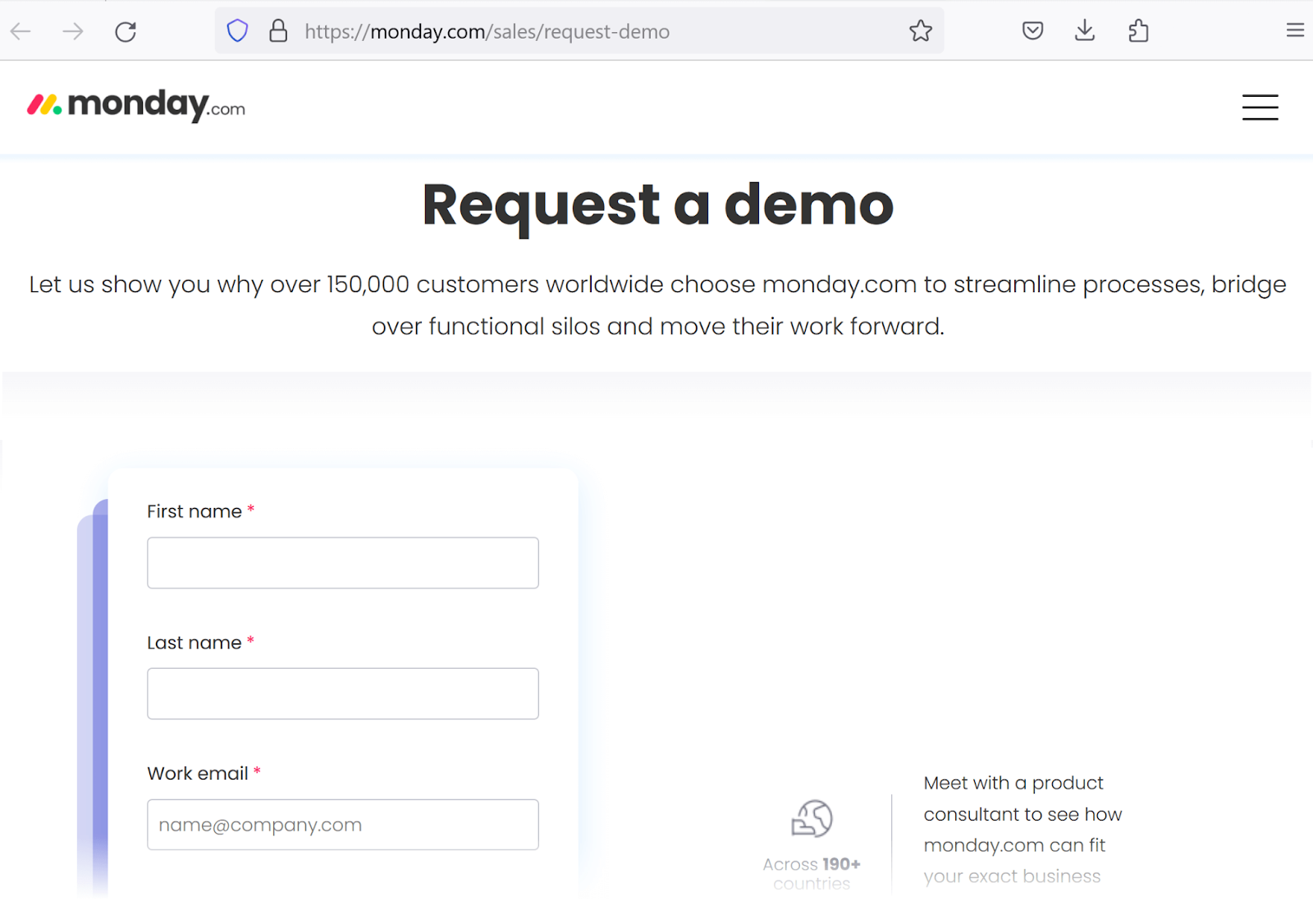
Optimizing your landing pages can help you increase traffic and conversions.
Here are some best practices:
- Communicate a clear value proposition: Explain how users will benefit from sharing their details
- Provide social proof: Use customer logos, testimonials, or ratings to instill confidence in users
- Build trust: Make it clear how you will use and protect the user’s data
- Deliver a great mobile experience: Make sure your landing page works well on every device type
- Display a “thank you” message: Thank users for submissions and let them know what’s next
But the most important part of the page is the lead generation form.
2. Optimize Lead Generation Forms
Lead generation forms are designed to collect prospects’ information. They’re the all-important final step in many lead generation campaigns, so it’s crucial to get them right.
First, you need to decide what information to collect. It’s about finding the right balance between the quantity and quality of submissions.
Simple forms (like the one below) are quick and easy for users to fill out. So, they can improve your conversion rate.

But complex forms (like the one below) help filter out low-quality leads. Because they require a higher level of interest and effort from the prospect.
They also collect additional data, which can better inform your marketing and sales efforts. And allow you to personalize your communications.

As a rule of thumb, the earlier in the customer journey your audience is, the simpler the form should be.
(Someone who’s more invested in your solution is more likely to volunteer extra details. Especially if they understand why they’re needed.)
Whatever fields it contains, your lead generation form should be eye-catching and easy to use.
If you have limited design or development resources, try using the Lead Generation Forms app. The drag-and-drop editor makes it easy to build standout forms.
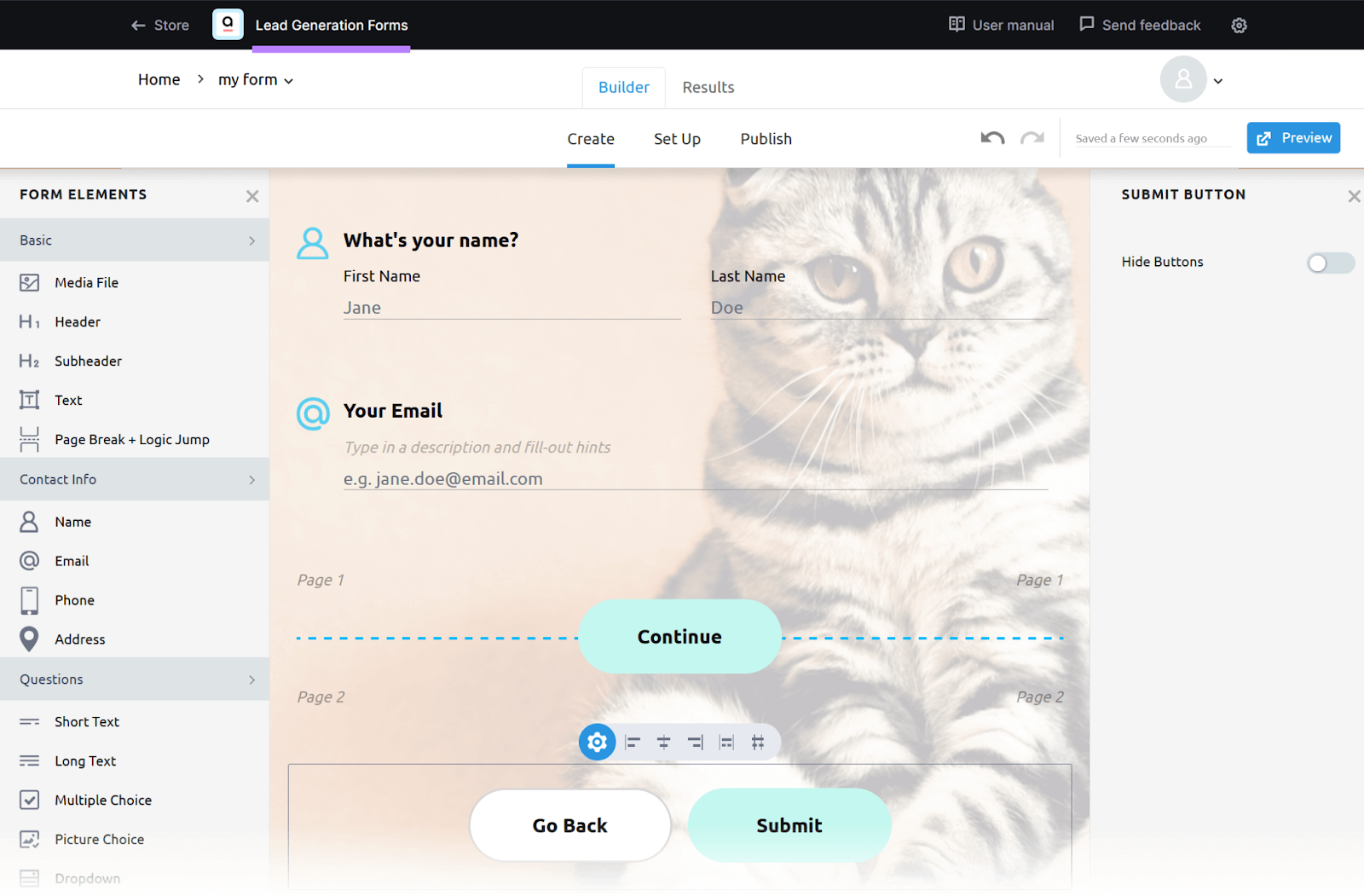
3. Create Quality Content
Create quality content that’s relevant to your business’s expertise and helpful or interesting to your target audience. This can help you capture prospects’ attention and earn their trust.
For example, American Express publishes useful articles, videos, and podcasts for finance professionals.
People who consume (and appreciate) this content are more likely to sign up for the company’s email newsletter. And ultimately become customers.
Here’s a quick peek at their content hub:
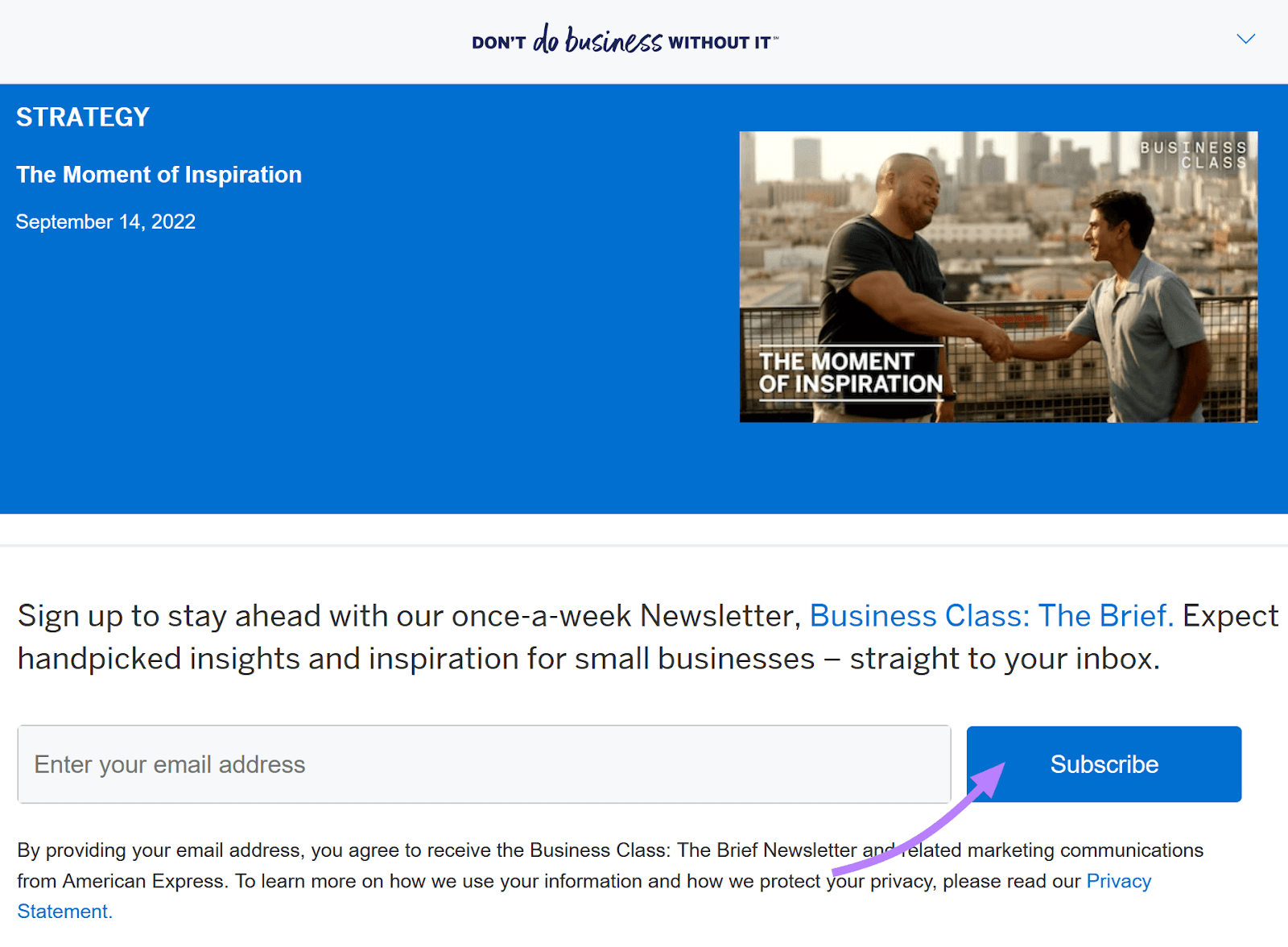
Also, create lead magnets. These are high-value pieces of content only accessible to users who share their information in exchange.
(In other words, they’re a type of gated content specifically designed to generate leads.)
For example, users must fill out a form to download this Slack report:

Lead magnets often take the form of templates, ebooks, or white papers.
Tip: Get content ideas with Semrush’s Topic Research tool. Enter any topic and your domain to find subtopics you’ve never covered before. And discover the latest industry trends.
4. Offer Live Chat Functionality
Live chat makes it easy for people to ask questions about your products or services while they’re browsing your site. That means they’re less likely to give up when they don’t find the information they need.
Plus, live chat has the potential to capture lead data.
Take the below example from Kantata. The AI bot automatically invites users to request a demo or speak to an expert.
During the conversation, prospects are encouraged to share their information and discuss their needs. Then, Kantata can add all useful details to their customer relationship management (CRM) system.

The conversational approach chat uses can make visitors more comfortable with sharing their data. It also allows you to quickly address any concerns that are holding them back.
5. Run Lead Generation Ads
Lead generation ads are online ads designed to generate leads—i.e., get prospects to share their information with your business.
You can use various types of online ads to drive traffic to lead generation landing pages. Such as paid search, paid social, and display ads.
For example, here’s a paid search ad for NetSuite’s accounting software:

The main link directs prospects to a landing page that features a lead generation form:
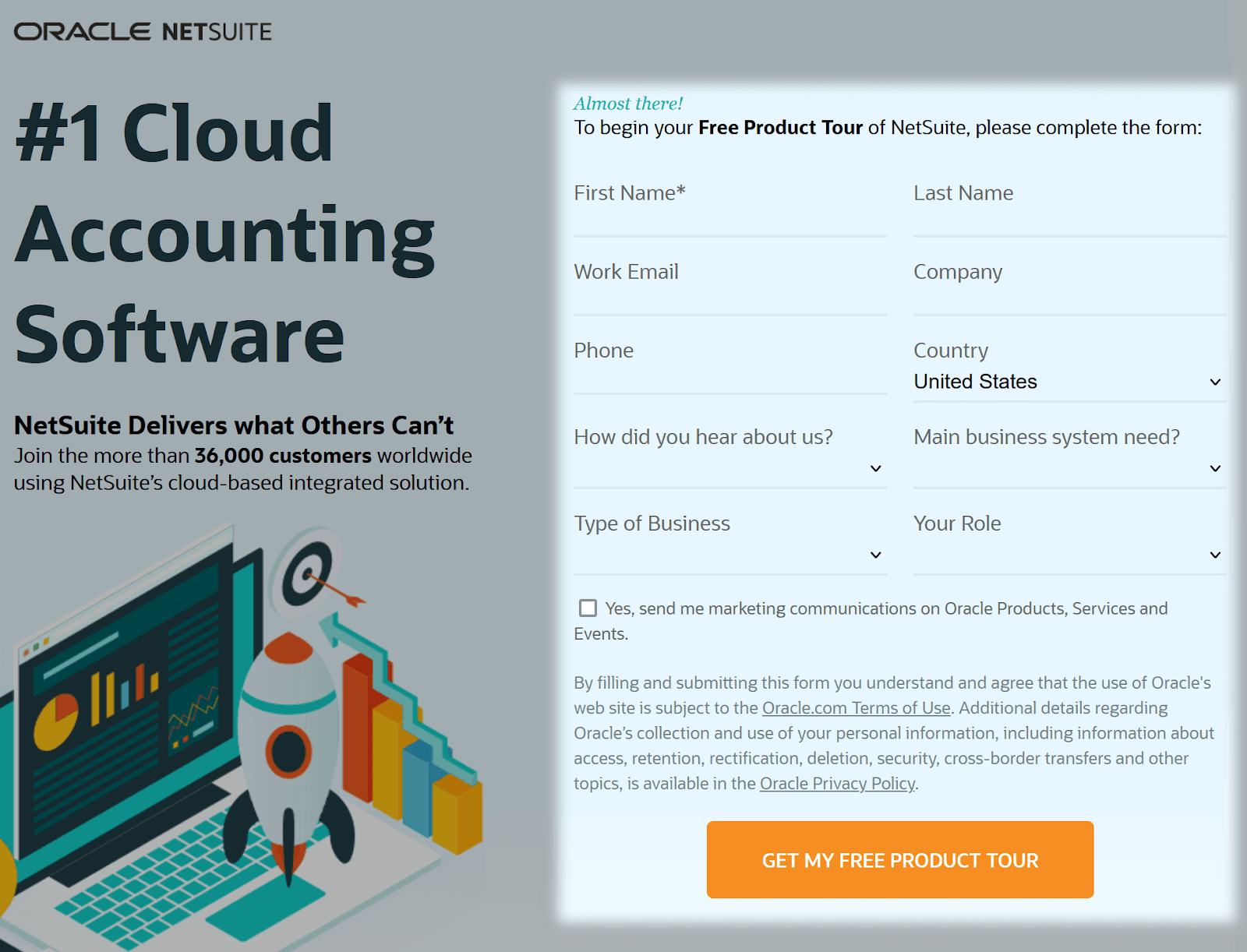
However, some advertising platforms have lead generation tools built in.
On Facebook, you can use Lead Ads to collect users’ information.
Facebook automatically populates the forms with available user data. This makes the process quicker and easier for prospects, reducing the risk of drop-off.

On Google Ads, you can use lead form assets to add call to action (CTA) banners to your ads.
These CTAs open native lead generation forms (meaning they appear directly in the ad rather than sending the user elsewhere). This can simplify the user journey and increase the chance of conversion.

Tip: Use Semrush’s PPC Advertising Toolkit to find campaign keywords, spy on your competitors’ ads, and more.
6. Leverage SEO
SEO helps you establish and improve organic (unpaid) rankings on relevant search engine results pages (SERPs). This can drive traffic to pages you decided to prioritize as part of your lead strategy.
It also gives you a competitive advantage. The higher you rank for topical keywords, the more likely you are to detract clicks from your rivals.
In this example, Wix ranks in the second organic position for “ecommerce website builder.”
Above rivals like Squarespace:
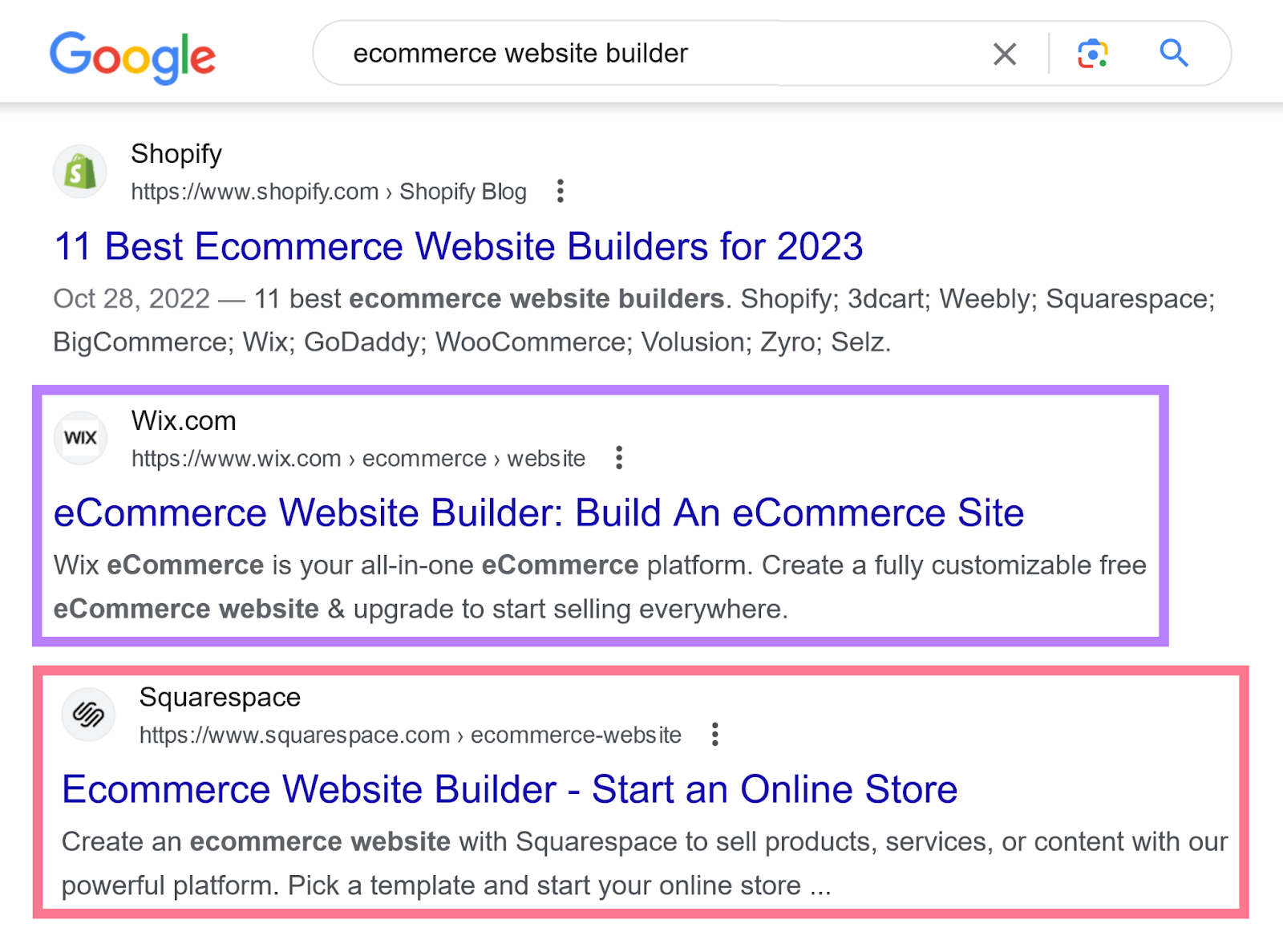
This landing page gets around 8,400 unpaid visits per month from Google users in the U.S., according to Semrush’s Organic Research tool:

Among the useful content on the Wix page, various CTAs prompt visitors to become leads:
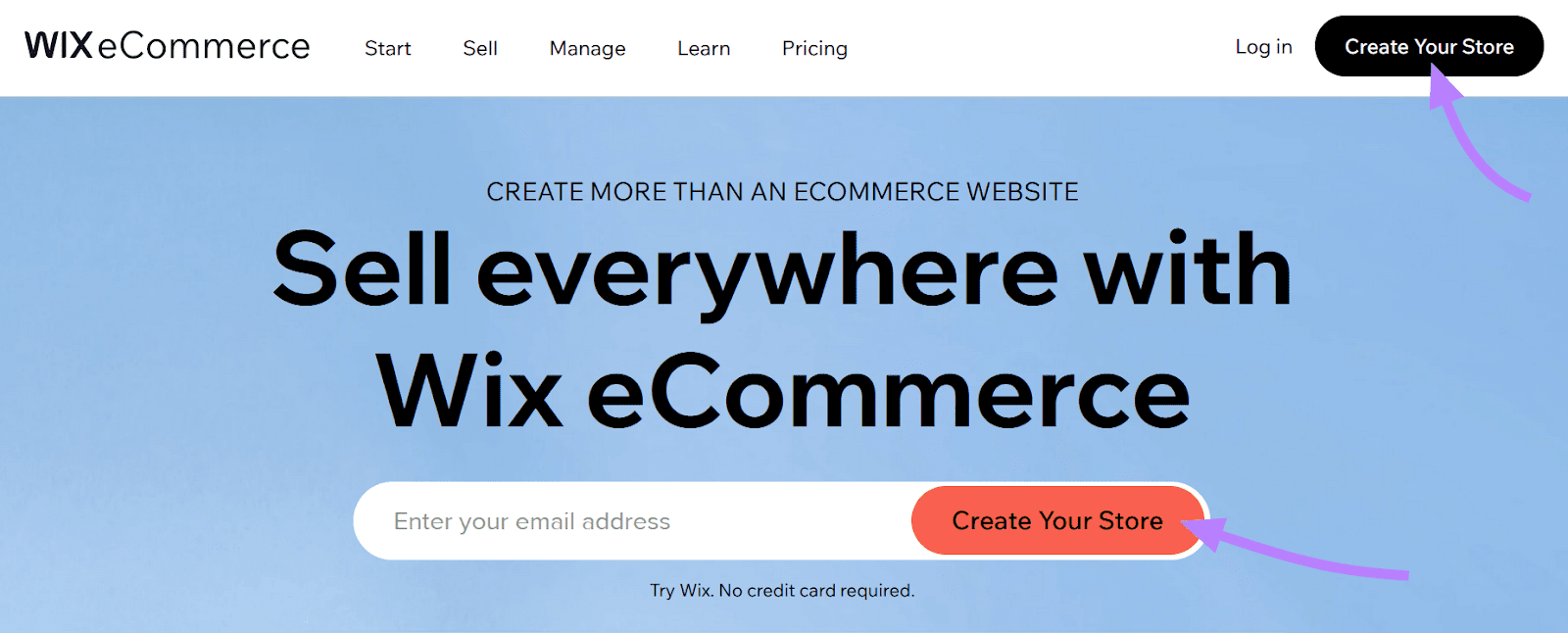
Tip: Use Semrush’s On Page SEO Checker to get recommendations for your landing pages. The tool provides optimization ideas based on the top 10 results for your target keyword(s).
7. A/B Test Different Lead Generation Tactics
A/B testing (or split testing) is a data-led method for comparing two versions of a webpage or another form of marketing material.
Here’s how it works for landing pages:
- Create two versions of your content: the control and the variant
- Display the control to 50% of your audience and the variant to the other 50%
- Compare key metrics to see which version performs best
Use split testing in combination with various lead generation methods to maximize conversions.
For example, you can compare landing page headlines. Find out which ad types work best. And test different quotes in your case studies.
Tip: If you’re interested in split testing for SEO, try SplitSignal. Once it’s set up on your website, you can launch tests in just a few clicks. And easily analyze the results.
8. Encourage Positive Reviews
Positive reviews can play an important role in your lead generation efforts. Because many people look to their peers’ opinions before engaging with a brand.
For example, Slack has positive ratings on third-party review sites. Helping to instill confidence in potential leads.
Here’s their average rating on popular review site G2:
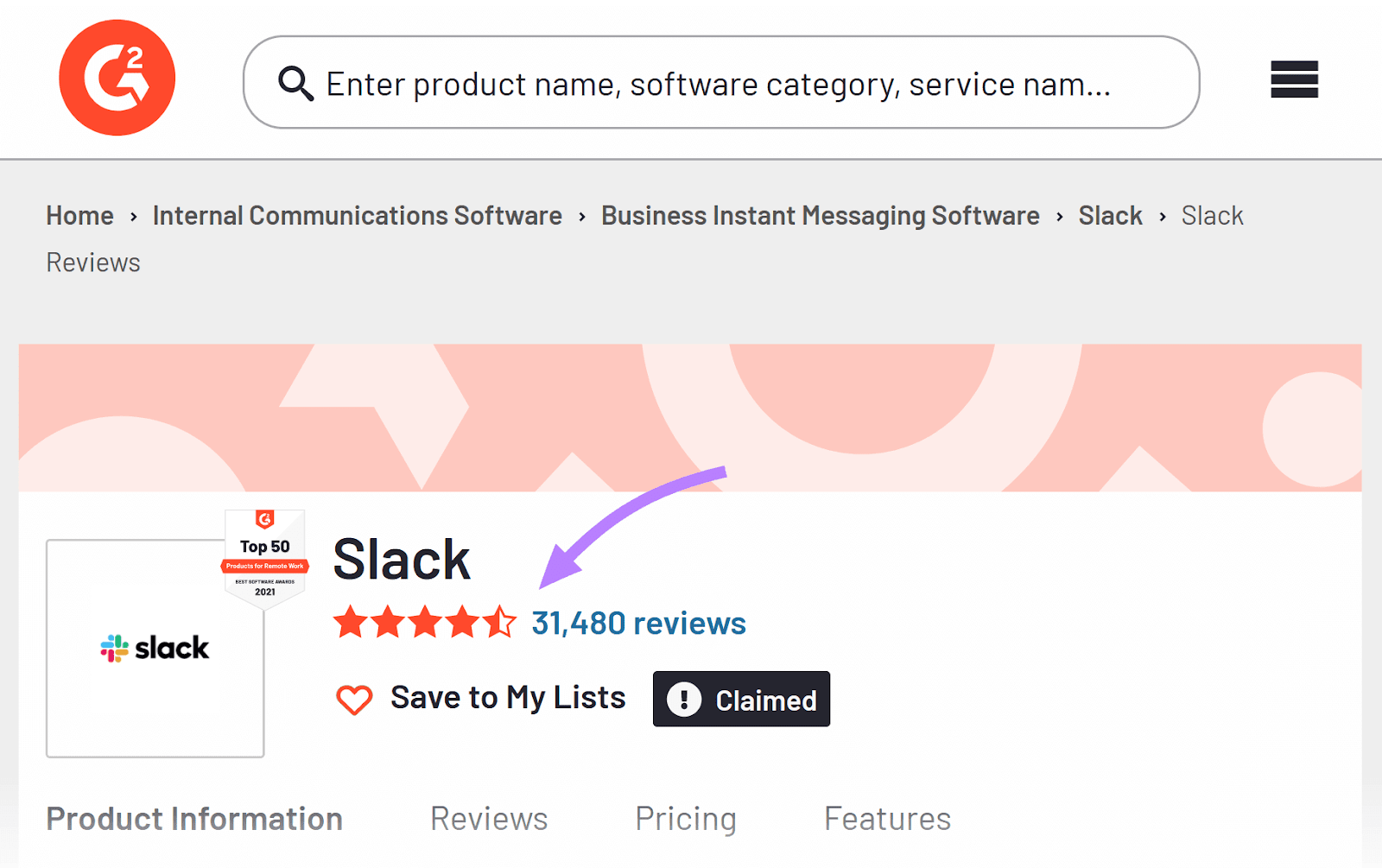
If you’re a local business, Google reviews are particularly important. Because the quality and quantity of ratings can impact your visibility in Google’s map listings.
For example, notice how the top-ranking businesses for “bbq joint in memphis” have a high volume of reviews and a high average rating:

So, encourage your satisfied customers to leave positive reviews. Try reaching out via email once they’ve had time to experience your product or service.
When you get reviews, respond to them. This shows prospects that you care about customer service. And gives you the opportunity to neutralize any negative feedback.
Tip: Semrush’s Review Management tool allows local businesses to track reviews across multiple directories. And monitor their reply rates on Google.
9. Try Remarketing
Remarketing (or retargeting) is displaying ads to users who visited your website but didn’t convert. The idea is to re-engage these prospects and turn them into leads.
This can be an effective tactic in your strategy for lead generation because website visitors have already expressed an interest in your brand. They might just need a little extra time (or convincing) to provide their details.
Or perhaps they never landed on the right page in the first place.
To minimize costs and maximize conversions, create your remarketing campaigns thoughtfully. For example, you can target prospects who visited key landing pages on your site.
On advertising platforms like Google and Facebook, you can create “lookalike audiences.” This allows you to target people who share key characteristics with previous customers.
And make sure to create an effective landing page for your campaign. One that’s highly targeted to the target audience and designed to generate leads.
10. Run Contests or Giveaways
Contests and giveaways can be great additions to lead generation marketing strategies because they incentivize people to provide their contact details.
But you need to collect the right types of data. And ensure you get users’ permission to follow up.
It’s also important to choose the right prize. So you can engage the right kinds of participants—i.e., prospective customers.
For example, a cash prize might attract all kinds of entrants. Whereas a year’s subscription to your software will engage higher-quality prospects.
Try running contests or sweepstakes via your own website.
Like Quiksilver has here:
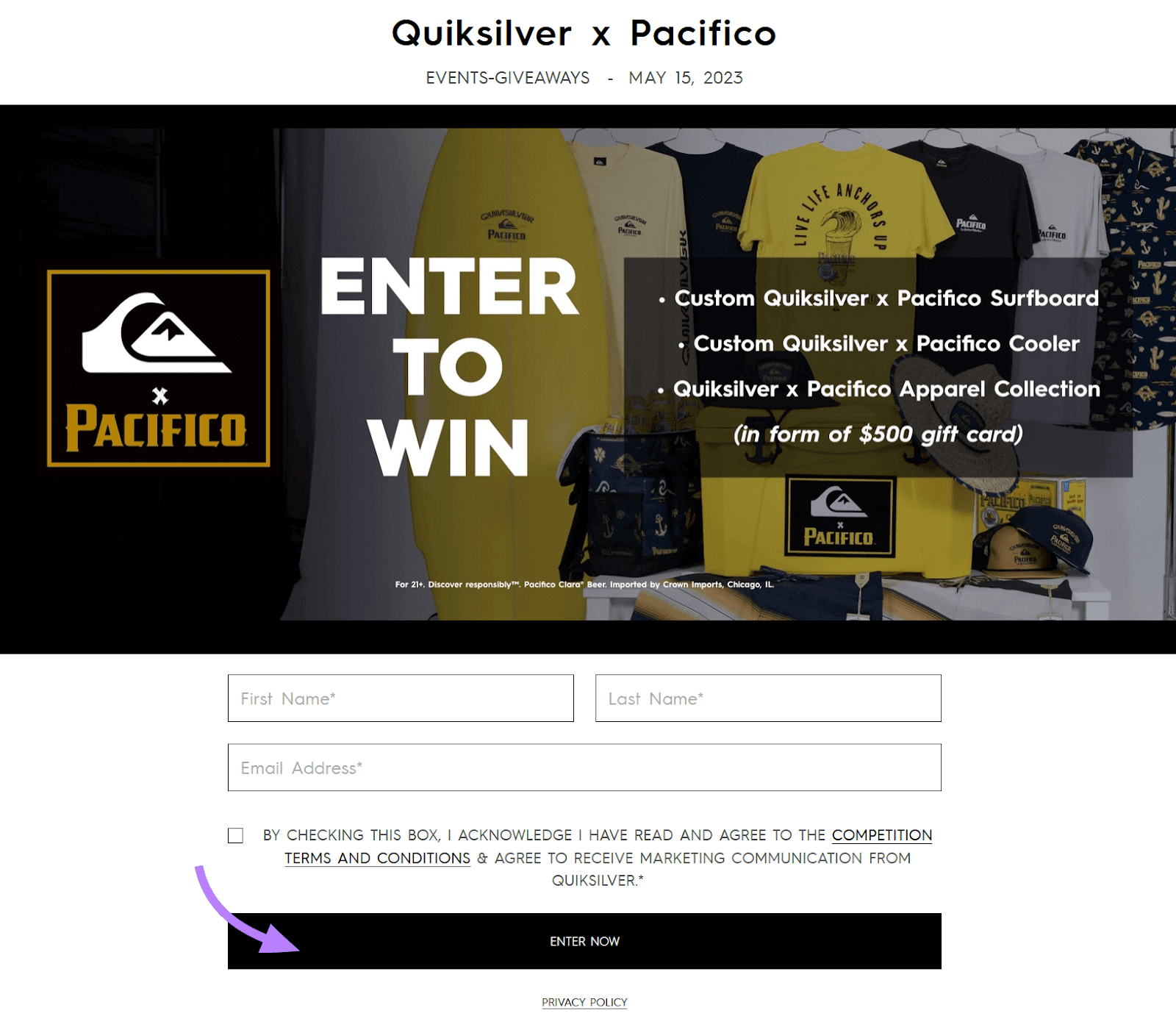
On a dedicated competition platform like Rafflecopter or Gleam:
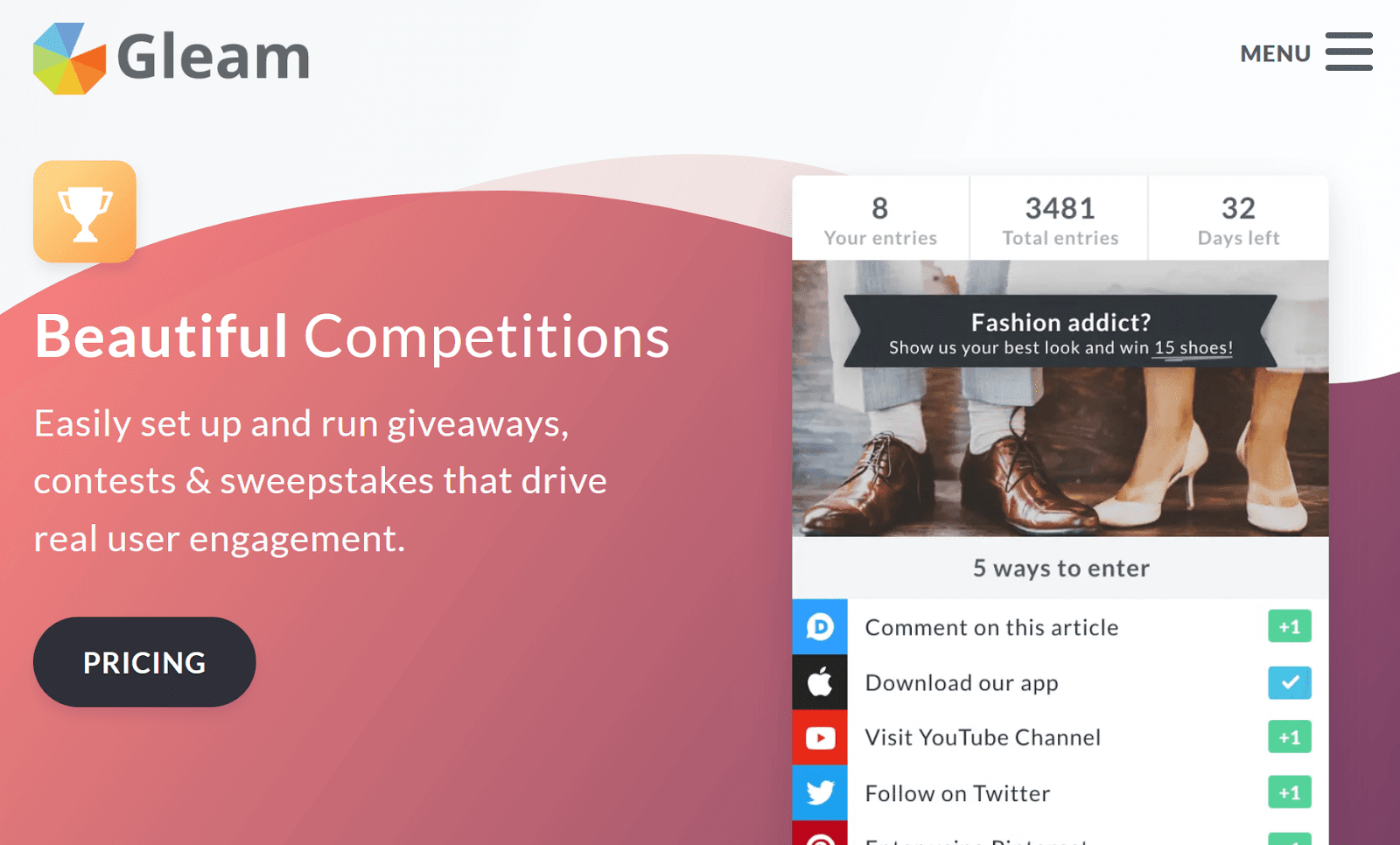
Or on a partner website. (You’ll need to reach out to publishers and influencers in your niche. To see if they’re interested in running a contest and collecting data on your behalf.)
For example, Capital FM hosted this competition for Ebay:

Before hosting a contest, it’s important to understand the platform’s capabilities. And any rules or regulations that apply.
11. Offer Free Tools or Trials
If your business is in the software-as-a-service (SaaS) industry, offering free tools or trials can be one of the most effective lead generation techniques. Because it attracts people who are likely interested in your solution. And offers them real value.
For example, Semrush has a Free Website Traffic Checker. Which is available to users without an account.
People who want more information are prompted to sign up for a free account:

Plus, there are many other benefits of a free Semrush account. These benefits incentivize prospective customers to sign up for Semrush (i.e., become leads). And give them a taste of a paid subscription.
12. Host an Online Event
Host an online event that requires attendees to register in advance. That way, you can gather valuable data about them (with the proper permission).
Pre-registration also creates a sense of anticipation and commitment. Which can lead to higher participation and engagement levels.
Make sure to choose a topic that will appeal to your target audience.
For example, Shopify hosts regular webinars that help users switch from other platforms:
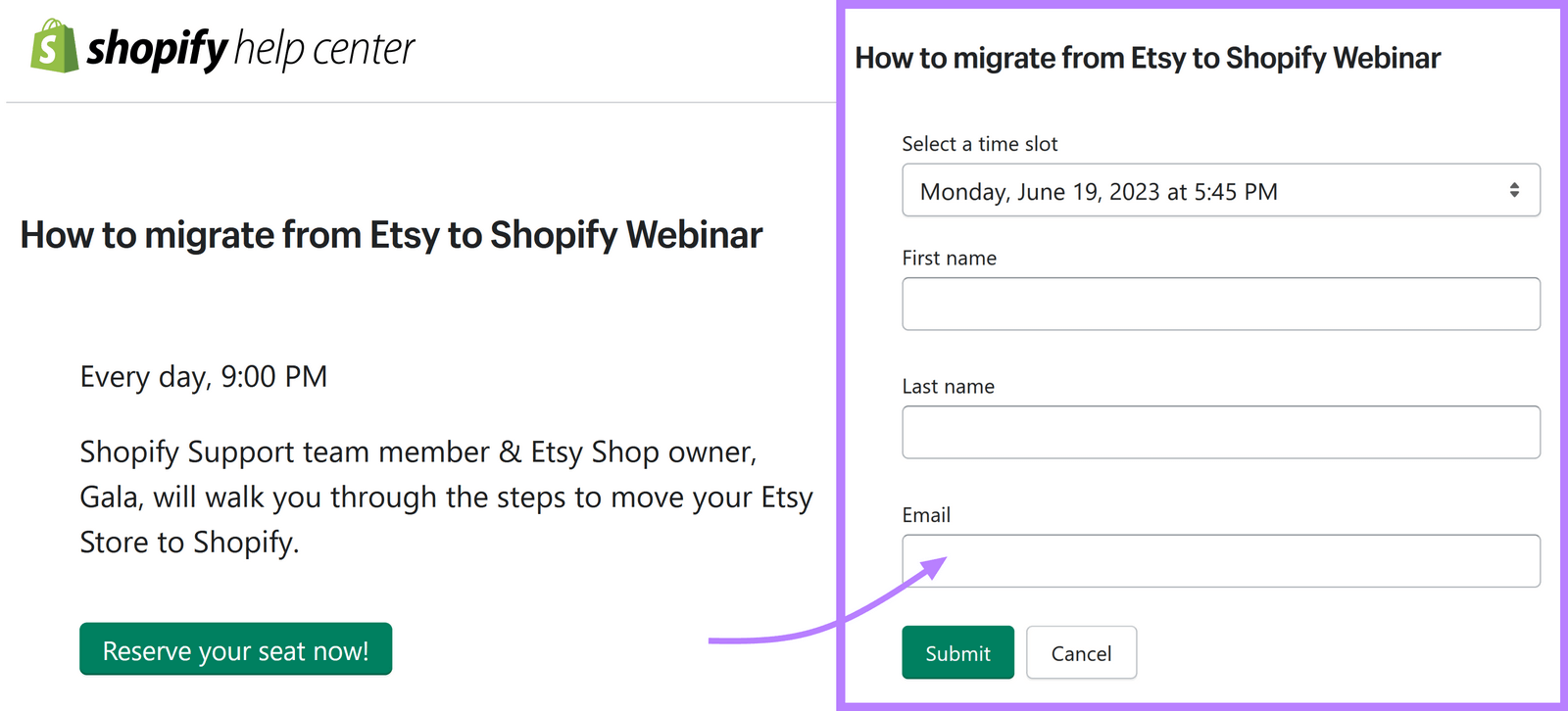
People who reserve a virtual seat at these events clearly have a high purchase intent. By collecting their details, Shopify can continue the conversation via email or other means. And try to convert them into customers.
13. Publish Case Studies
Like reviews, case studies help prove that your business meets customers’ expectations. They demonstrate the value of your products and services.
This makes case studies one of the most effective types of content marketing for lead generation.
At Semrush, we publish success stories that showcase results from various businesses. Users can filter by client type, industry, and company size to get a realistic idea of what’s achievable:

These case studies feature specific results (like increased revenue or decreased costs) that are of particular interest to potential customers. And tell the story behind them.
CTAs prompt readers to sign up for free and try the platform for themselves:

14. Connect with Prospects Using Social Media
If you want to capture lead data on social media, you’ll probably need to run ad campaigns.
But organic social media is still a valuable addition to your lead generation strategy. Because it can help you connect with your target audience.
Here are some social media best practices:
- Create profile(s) on the social media platforms where your target audience hangs out
- Publish social media content that appeals to your target audiences
- Focus on native content, but don’t be afraid to link to your website (or elsewhere)
- Engage with potential customers by starting conversations and answering questions
- Monitor engagement metrics to see which posts perform best, and adapt accordingly
For more advice, check out our social media management guide. Or enroll in the Social Media Marketing Crash Course.
Tip: Semrush’s social media tools allow you to schedule posts, analyze your audience, track results, and much more.
Regularly posting valuable content keeps your brand top-of-mind and nurtures leads by providing the information they need to make informed decisions.
Semrush's Social Content AI can help you maintain a consistent posting schedule by generating content ideas, crafting engaging posts tailored to your brand, and even designing eye-catching visuals.
The tool also simplifies the promotion of lead-generating events like webinars by creating social media posts directly from your event landing page.
By tracking your analytics, you can see how this consistent, high-quality content drives brand visibility and contributes to your lead generation efforts.
15. Create a Referral Program
Create a referral program that rewards existing customers for referring new ones. Once it’s up and running, customers will generate leads for you—there’s very little work required on your end.
For this tactic to successfully support your lead generation strategy, you need to provide a strong incentive.
Some businesses do this by rewarding the person providing the referral and the person receiving it. To maximize the chance of success.
For example, Girlfriend Collective customers can refer a friend. If the referral is successful, they get a free pair of leggings and their friend gets 30% off:

Strong customer service is also essential to your referral system’s success. Because unhappy customers won’t recommend your business to their peers.
Tip: Also, consider starting an affiliate program. This incentivizes publishers to refer leads in exchange for a payment or commission. Check out our affiliate marketing guide to learn more.
Lead Generation Best Practices
Whichever tactics you use, make sure to apply these overarching lead generation best practices:
- Perform audience research: There’s no use applying lead generation techniques to people who’ll never want or need your business’s solution. So, make sure to define your target audience and tailor your approach accordingly.
- Focus on quality over quantity: Low-quality leads can waste your sales team’s time. So, focus your attention on high-quality leads who are more likely to generate revenue. Even if that means narrowing your audience more than usual.
- Use data responsibly: You have a responsibility to collect data properly and store it with care. But beyond legal implications, this is important for building trust with your audience. Only request the data you need. And clearly communicate how you’ll use it.
- Analyze user data: Don’t just use data to contact leads. By collecting and analyzing lead capture data at scale, you can better understand your target audience. And improve your market segmentation strategy.
- Measure your results: Identify and measure key metrics to see which lead generation tactics work best for your business. In many cases, you’ll want to focus on the conversion rate (i.e., what percentage of visitors become leads).
- Iterate your approach: Businesses, audiences, and markets change. That means it’s crucial to periodically review and improve your lead generation plan.
Also consider how you’ll nurture your leads—i.e., convert them into customers.
If you’re building a sales funnel, the next step is lead qualification.
This is the process of analyzing data to see which leads are most likely to become customers and deliver the highest revenue. It helps you prioritize your efforts.
You can then reach out to those contacts.
It’s important to follow up promptly. And to use the data you’ve collected effectively.
For example, personalized email marketing can help you nurture leads in the earlier stages of the buying journey. But someone with higher purchase intent might be ready for a sales call.
Learn More About Lead Generation and SEO
SEO is one of the most popular tactics in businesses’ lead generation strategies.
To explore the subject in more depth, enroll in the Semrush Academy course How to Boost Lead Generation with SEO.
Or jump straight in with the help of our SEO Toolkit.
